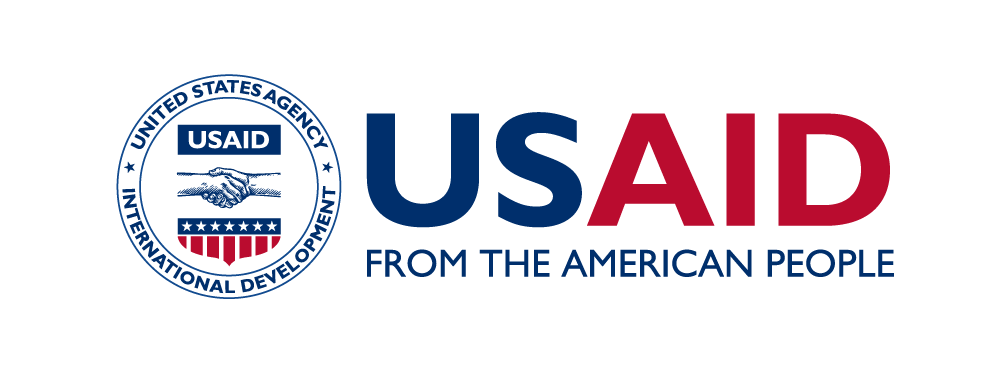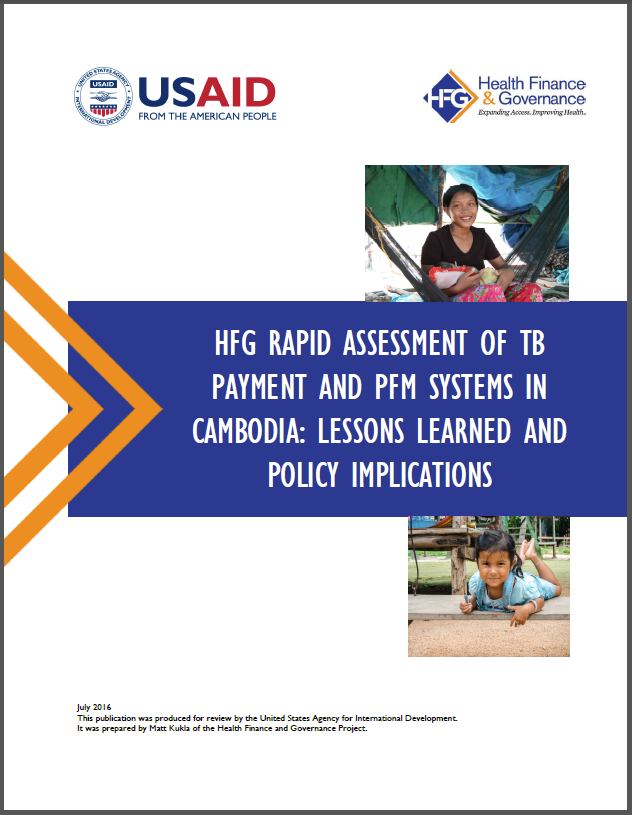HFG Rapid Assessment of TB Payment and PFM Systems in Cambodia: Lessons Learned and Policy Implications
Categories: HIV/AIDS, Home Page Map, Publications, Where We Work
Resource Type: Report
Authors: Matthew Kukla
Published: 7/1/2016
Despite substantial funding for tuberculosis (TB) prevention and treatment over the last 10 years, both by donors and governments, the worldwide incidence of TB remains troubling. Across lower- and middle-income countries, access to TB services is limited, and the quality of TB services is often substandard. Many countries face questions over the long-term financial sustainability of their efforts to prevent and treat the disease. Cambodia has one of the highest rates of TB in the world, with prevalence and incidence rates sitting at roughly 660 and 437 per 100,000 people, respectively (WHO 2015). Meanwhile, donor funding for TB is declining, the government is struggling to generate new resources for TB, and out-of-pocket spending still accounts for a significant share of health and TB expenditures. Cambodia needs to identify mechanisms to improve the efficiency of TB spending (i.e., mechanisms for spending money wisely). In the short term, this may mean finding ways to improve outputs – such as access, use of services, and quality – for a given level of spending on TB. In the long term, Cambodia and countries facing similar challenges may be interested in finding ways to achieve better outputs with fewer resources.
Cambodia was the subject of one of several country case studies linking strategic TB purchasing with improved efficiency and better outcomes. In May/June 2016, HFG conducted a brief but in-depth assessment of health purchasing/provider payment and PFM systems in Cambodia, to identify rigidities and barriers. The assessment had a twofold purpose:
- HFG would observe and learn from key stakeholders in Cambodia, with the aim of synthesizing information on PFM barriers and provider payment bottlenecks.
- Where these issues were not already being addressed, HFG would make recommendations for removing barriers and bottlenecks.




